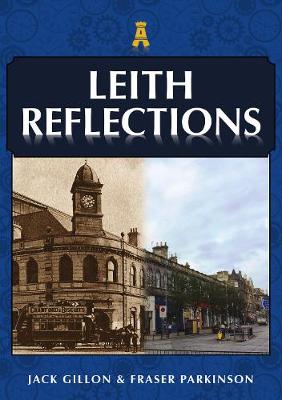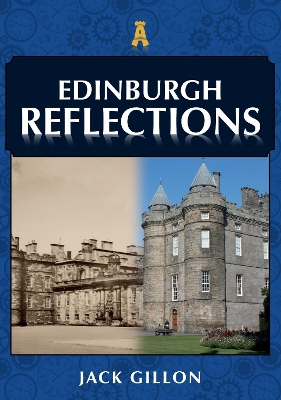Reflections
2 total works
In 1560, Mary of Guise moved the Scottish Court to Leith, a site that is now Parliament Street, off Coalhill. Serving Edinburgh’s shipbuilding and repair facilities, in subsequent centuries Leith’s port saw the opening of a new Wet Dock, the first of its kind in Scotland. Leith has played a long and prominent role in Scottish history. As the major port serving Edinburgh, it has been the stage on which many significant events have taken place. From housing the Scottish Court to seeing civil war, being the port of call for royal arrivals and becoming its own burgh, Leith has seen it all.
Leith Reflections features an exciting collection of historic and modern pictures that are individually merged to reveal how the area has changed over the decades. Each of the 180 pictures in this book combines a recent colour view of Leith with the matching sepia archive scene. Through the split-image effect, readers can see how streets, buildings, the docks and everyday life have transformed with the passing of time. Local authors Jack Gillon and Fraser Parkinson present this fascinating visual chronicle that ingeniously reflects past and present glimpses of Leith.
This book will be of interest to residents, visitors, local historians and all those with links to the area.
Leith Reflections features an exciting collection of historic and modern pictures that are individually merged to reveal how the area has changed over the decades. Each of the 180 pictures in this book combines a recent colour view of Leith with the matching sepia archive scene. Through the split-image effect, readers can see how streets, buildings, the docks and everyday life have transformed with the passing of time. Local authors Jack Gillon and Fraser Parkinson present this fascinating visual chronicle that ingeniously reflects past and present glimpses of Leith.
This book will be of interest to residents, visitors, local historians and all those with links to the area.
Edinburgh, Scotland’s capital city, has a dramatic cityscape and its heritage is reflected in the UNESCO World Heritage Sites of its Old and New Towns in the city’s centre. The city has a wealth of historic streets and buildings, overseen by natural and manmade landmarks such as Castle Rock and Arthur’s Seat but the city has seen myriad changes through the years, including slum clearance and the development of new residential areas in the suburbs, new retail centres, the opening of the Scottish Parliament in 1999, the growth of the financial district from the 1990s onwards and a new tram system.
Edinburgh Reflections features an exciting collection of historic and modern pictures that are individually merged to reveal how the area has changed over the decades. Each of the 180 pictures in this book combines a recent colour view of Edinburgh with the matching sepia archive scene. Through the split-image effect, readers can see how streets, buildings and everyday life have transformed with the passing of time. Local author Jack Gillon presents this fascinating visual chronicle that ingeniously reflects past and present glimpses of Edinburgh.
This book will be of interest to residents, visitors, local historians and all those with links to the area.
Edinburgh Reflections features an exciting collection of historic and modern pictures that are individually merged to reveal how the area has changed over the decades. Each of the 180 pictures in this book combines a recent colour view of Edinburgh with the matching sepia archive scene. Through the split-image effect, readers can see how streets, buildings and everyday life have transformed with the passing of time. Local author Jack Gillon presents this fascinating visual chronicle that ingeniously reflects past and present glimpses of Edinburgh.
This book will be of interest to residents, visitors, local historians and all those with links to the area.

